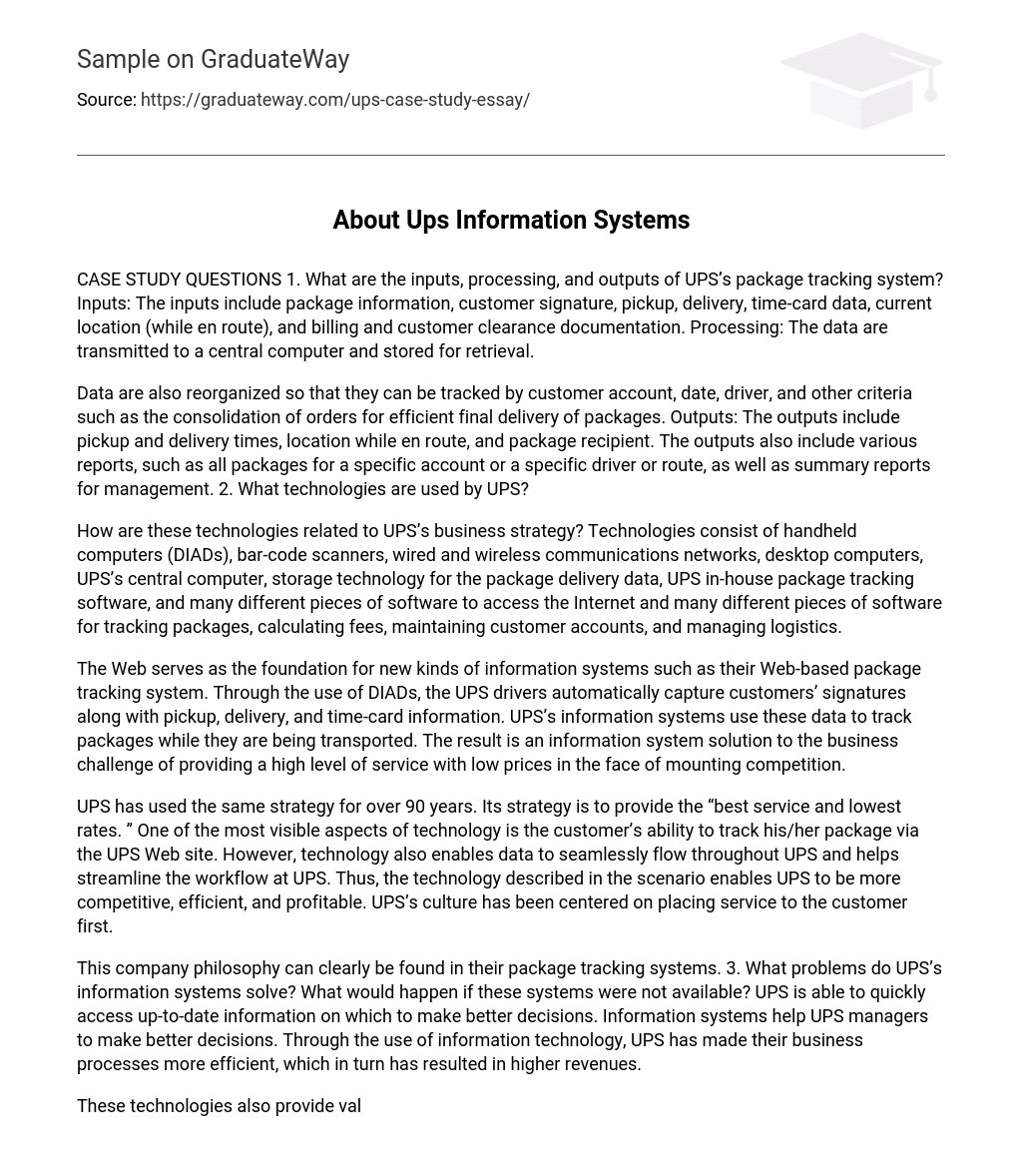What are the inputs, processing, and outputs of UPS’s package tracking system?
- Inputs: The inputs include package information, customer signature, pickup, delivery, time-card data, current location (while en route), and billing and customer clearance documentation.
- Processing: The data are transmitted to a central computer and stored for retrieval. Data are also reorganized so that they can be tracked by customer account, date, driver, and other criteria such as the consolidation of orders for efficient final delivery of packages.
- Outputs: The outputs include pickup and delivery times, location while en route, and package recipient. The outputs also include various reports, such as all packages for a specific account or a specific driver or route, as well as summary reports for management.
What technologies are used by UPS?
How are these technologies related to UPS’s business strategy? Technologies consist of handheld computers (DIADs), bar-code scanners, wired and wireless communications networks, desktop computers, UPS’s central computer, storage technology for the package delivery data, UPS in-house package tracking software, and many different pieces of software to access the Internet and many different pieces of software for tracking packages, calculating fees, maintaining customer accounts, and managing logistics.
The Web serves as the foundation for new kinds of information systems such as their Web-based package tracking system. Through the use of DIADs, the UPS drivers automatically capture customers’ signatures along with pickup, delivery, and time-card information. UPS’s information systems use these data to track packages while they are being transported. The result is an information system solution to the business challenge of providing a high level of service with low prices in the face of mounting competition.
UPS has used the same strategy for over 90 years. Its strategy is to provide the “best service and lowest rates. ” One of the most visible aspects of technology is the customer’s ability to track his/her package via the UPS Web site. However, technology also enables data to seamlessly flow throughout UPS and helps streamline the workflow at UPS. Thus, the technology described in the scenario enables UPS to be more competitive, efficient, and profitable. UPS’s culture has been centered on placing service to the customer first.
This company philosophy can clearly be found in their package tracking systems. 3. What problems do UPS’s information systems solve? What would happen if these systems were not available? UPS is able to quickly access up-to-date information on which to make better decisions. Information systems help UPS managers to make better decisions. Through the use of information technology, UPS has made their business processes more efficient, which in turn has resulted in higher revenues.
These technologies also provide value for the company because they are seen as an asset from the customers’ perspective. The technologies are seen as helping the customers’ complete their tasks more efficiently, which in turn is seen as value-added services as opposed to increasing the cost of sending packages. Arguably, UPS might not be able to compete effectively without the technology. If the technology were not available, then UPS would, as it has through most of its history, attempt to provide that information to its customers, but at higher prices.





